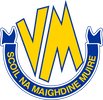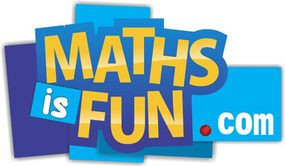Maths
Whether we use Maths at an advanced level as an accountant or to work out budgets for looking after a home and family, we use Maths in many areas of our lives. Being able to work out how many, how often or how heavy things are is important in different situations. Whether we can afford to buy something, whether it will fit the space or whether the quantity in the pack will be enough for our needs are all important too. Many people have a mental ‘block’ about Maths or feel they are not clever enough to be good at more than the basics and many parents feel they are not good enough at Maths to be able to help their children become confident with it. Other parents feel that the Maths their children are doing is different from when they were at school and they do not know the vocabulary or how to explain certain activities without confusion. These guidelines will help you find out as much as you can about what and how your child is learning.
At Virgin Mary Girls N.S., children receive a daily Maths lesson. As a basis for planning, the staff use The Primary School Maths Curriculum which outlines what is expected for children from Junior Infants to 6th Class.
The purpose of this booklet is to outline the topics that are taught in each class and to explain the various calculation methods along with the Maths language used at each class level.
Our Maths curriculum is based on a spiral approach to teaching and learning meaning that topics are revisited from year to year and previous knowledge is extended and built upon.
Primary School Maths Curriculum
There are five strands in the Primary School Maths Curriculum;
Number—Counting, Addition, Subtraction, Multiplication, Division, Place Value, Fractions etc.
Algebra— Number Patterns.
Measures—Length, Weight, Capacity, Time, Money.
Shape and Space—2D and 3D shapes, Angles.
Data—Understanding, interpreting and making charts and graphs.
The Importance of Counting
A lot of time is now spent on oral Maths and counting skills in school every day. Children practice counting forwards and backwards to advance their number knowledge and help with addition and subtraction. Here’s some ideas and you probably have more of your own you could try out!
Counting ideas/games to do at home Practice chanting the number names. Encourage your child to join in with you. When they are confident, try starting from different numbers e.g. 4, 5, 6 and larger numbers for older children. Also try counting backwards. This is suitable for all age groups. Getting children comfortable with forward and backward number sequence is so important.
Give your child the opportunity to count objects (coins, pasta, shapes, buttons etc..) Encourage them to move each object as they count them.
Play games that involve counting e.g. snakes and ladders, dice games. Coin in a box: Parents drop coins into a box one at a time. Child closes their eyes and then guesses how many coins are in the box. Check your answer by counting together.
Click on the images below to visit websites, which may be useful for you in helping your daughter with problem solving.
At Virgin Mary Girls N.S., children receive a daily Maths lesson. As a basis for planning, the staff use The Primary School Maths Curriculum which outlines what is expected for children from Junior Infants to 6th Class.
The purpose of this booklet is to outline the topics that are taught in each class and to explain the various calculation methods along with the Maths language used at each class level.
Our Maths curriculum is based on a spiral approach to teaching and learning meaning that topics are revisited from year to year and previous knowledge is extended and built upon.
Primary School Maths Curriculum
There are five strands in the Primary School Maths Curriculum;
Number—Counting, Addition, Subtraction, Multiplication, Division, Place Value, Fractions etc.
Algebra— Number Patterns.
Measures—Length, Weight, Capacity, Time, Money.
Shape and Space—2D and 3D shapes, Angles.
Data—Understanding, interpreting and making charts and graphs.
The Importance of Counting
A lot of time is now spent on oral Maths and counting skills in school every day. Children practice counting forwards and backwards to advance their number knowledge and help with addition and subtraction. Here’s some ideas and you probably have more of your own you could try out!
Counting ideas/games to do at home Practice chanting the number names. Encourage your child to join in with you. When they are confident, try starting from different numbers e.g. 4, 5, 6 and larger numbers for older children. Also try counting backwards. This is suitable for all age groups. Getting children comfortable with forward and backward number sequence is so important.
Give your child the opportunity to count objects (coins, pasta, shapes, buttons etc..) Encourage them to move each object as they count them.
Play games that involve counting e.g. snakes and ladders, dice games. Coin in a box: Parents drop coins into a box one at a time. Child closes their eyes and then guesses how many coins are in the box. Check your answer by counting together.
Click on the images below to visit websites, which may be useful for you in helping your daughter with problem solving.




